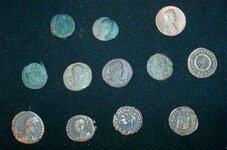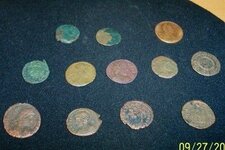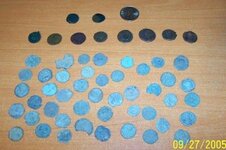gator6romeo
Greenie
I need some help, my son just got a lot of 45 encrusted roman coins to kick off a roman coin collection thinking the dirt would just crumble off. Needless to say, it does not. How do we clean these coins without an electric cleaner? And if we pull it off do encrusted coins come out nice? Thanks for the help!
gator6romeo
gator6romeo


 You could have some potentially rare coins there
You could have some potentially rare coins there  Are the coins themselves stable or are they very brittle? Also what are the sizes? Wish you and your son luck in cleaning them, should be fun to ID them and stuff later too, prolly keep you busy all winter
Are the coins themselves stable or are they very brittle? Also what are the sizes? Wish you and your son luck in cleaning them, should be fun to ID them and stuff later too, prolly keep you busy all winter 








